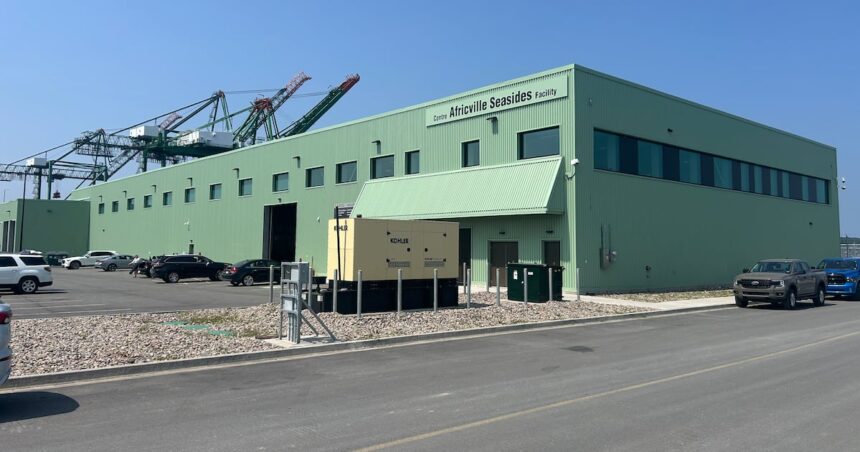In a significant boost to Canada’s border security and international trade capabilities, Halifax has unveiled its state-of-the-art Marine Container Examination Facility (MCEF) at one of North America’s busiest port terminals. The 25,000-square-meter complex represents a $175 million investment in modernizing the nation’s cargo inspection infrastructure and solidifying Halifax’s position as a premier Atlantic gateway.
“This facility fundamentally changes how we approach container security in the eastern seaboard,” explained Raymond Chen, Regional Director for the Canada Border Services Agency (CBSA). “With processing capacity increased by 40 percent and inspection times reduced by nearly half, we’re achieving both enhanced security and improved commercial flow.”
The facility integrates next-generation scanning technology with environmental sustainability features. Advanced X-ray systems capable of penetrating dense cargo materials are now paired with AI-assisted image analysis, allowing officers to identify suspicious contents more efficiently than ever before. The building itself incorporates a rainwater collection system, solar panels, and energy-efficient design elements that reduce its carbon footprint by an estimated 30% compared to conventional structures.
Halifax’s strategic geographic position as the closest North American deep-water port to Europe has long made it a crucial trade link. The port currently handles over 550,000 shipping containers annually, with projections indicating a 15% increase in volume over the next five years as global shipping patterns continue to evolve post-pandemic.
“What we’re witnessing is a strategic investment in both security and economic facilitation,” noted Dr. Margaret Wilson, maritime trade analyst at Dalhousie University. “In the competitive world of international shipping, efficiency at ports creates a significant advantage. This facility helps position Halifax to capture increased container traffic from emerging trade corridors.”
The MCEF becomes operational at a critical juncture for North American trade. Recent diplomatic tensions with China and shifting manufacturing bases throughout Southeast Asia have created new shipping patterns, while the expansion of the Panama Canal has altered traditional routes. Canadian ports along both coasts are positioning themselves to capitalize on these changes.
For Halifax residents, the facility brings immediate economic benefits, creating 125 permanent positions and supporting an estimated 300 indirect jobs throughout the region. The construction phase alone injected approximately $83 million into the local economy over the past two years.
“We’re seeing the culmination of years of planning between multiple levels of government and the private sector,” said Halifax Mayor Devon Mitchell. “This facility demonstrates what’s possible when we take a long-term approach to infrastructure development that balances security concerns with commercial realities.”
The MCEF incorporates dedicated spaces for specialized inspections, including refrigerated goods and potentially hazardous materials. Environmental protection measures, such as containment systems for potential spills and advanced filtration for wastewater, reflect lessons learned from older facilities across North America.
The modernization arrives amid heightened concerns about global smuggling networks. Last year alone, CBSA officers at Halifax intercepted over $27 million in contraband goods, including narcotics and counterfeit products, hidden within legitimate cargo shipments.
“Criminal organizations constantly adapt their methods,” explained RCMP Superintendent Caroline Dubois, who oversees integrated border enforcement operations. “This facility gives us technological advantages we simply didn’t have before, allowing us to stay ahead of increasingly sophisticated smuggling techniques.”
As global shipping networks continue to evolve in response to geopolitical pressures and climate change considerations, investments like Halifax’s MCEF may determine which ports thrive in the competitive landscape of international trade. The question now facing Canadian policymakers is whether similar investments across the country’s other major ports will follow quickly enough to maintain Canada’s position in rapidly changing global supply chains.

























